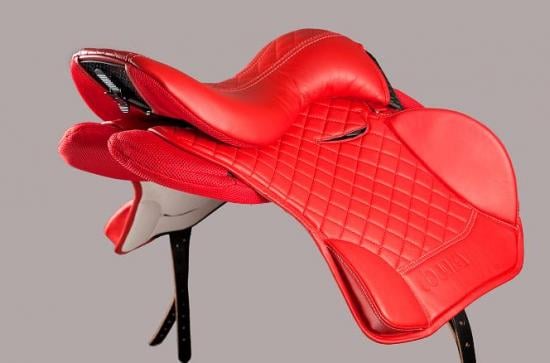
In 2005, Martin Ryan was finishing up his degree in industrial and product design. As a keen showjumper and eventer, Ryan wondered why the technological advances seen across other sports were lacking in the equestrian disciplines.
"I was satisfied with what I had in terms of saddles, but I knew no better," Ryan told CNN. His curiosity and passion for show jumping inspired him to go back to basics, and he spent the next few years researching horse biomechanics while designing and testing materials. And, in 2015, the Bua saddle was launched to market.
"Traditional saddles are great, they're tried and tested through centuries, but a horse moves differently to the rider, and the structure inside a traditional saddle is for the rider, and secondary for the horse," " he said. "I wanted to balance the needs of the horse and the rider better."
The foundation of most saddles starts first with a structure called a tree. It acts as the bones of the saddle, balancing the rider and allowing the weight to be evenly distributed across the back of the horse.
"A standard tree conforms to the seat of the rider, and then for it to accommodate to the horse, it has padding attached to the underside," Ryan said. "With the Bua tree, it's in two -- it's a tree for the rider, and a tree for the horse. And it's joined at the front, which means it gives it a natural suspension between the two."
The cantilevered tree in the Bua saddle is made from a composite material often used in aerospace engineering, making it lightweight yet durable. Traditional materials like leather, then make up the soft components that provide padding and protection
